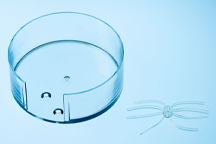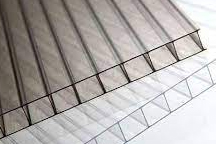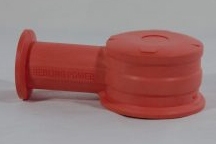Conductive Plastics
 There are two main reasons to use conductive plastics:
There are two main reasons to use conductive plastics:
- Conductive plastics prevent ESD (electrostatic discharge)
- Conductive plastics provide EMI (electromagnetic interference) shielding
If you are in need of conductive plastic parts, Rebling is experienced in molding many thermoplastic materials with conductive additives. Usually, the base resin (such as polypropylene or PPS) is compounded with stainless steel fibers, nickel fibers or carbon powder to meet the desired conductivity.
Conductive plastics for ESD
Electrostatic discharge can be a problem in sensitive electronic assemblies as well as paper and textile processing applications which generate a lot of static electricity. Traditionally, metal components have been used to prevent the discharge of static electricity. However, in many cases, complex shapes are too expensive to machine or impractical to stamp. A conductive plastic solves these issues. Additionally, a conductive plastic saves weight compared to a diecast aluminum or stamped steel shield.
Conductive plastics for EMI shielding
EMI shielding is important in systems where sensitive electronics can be affected. It is also important in electric vehicle applications where EMI can cause a safety hazard. Again, EMI shielding is traditionally accomplished with metal components. However, molding conductive plastics have the same advantages of lower weight, cost, and the ability to make complex shapes. Designing for EMI shielding in electrical systems can be tricky. Rebling recommends extensive EMI testing when using conductive plastics for shielding. With EMI shielding, theory doesn’t always predict success, and the effectiveness of shielding for conductive applications must be proven through testing.
Conductive Platings
Another option for both ESD protection and EMI shielding is conductive plating. Some plastics can be coated or plated with conductive metals to serve the same goals. Typically this is a more expensive option than other conductive plastic molding applications, but may be more appropriate in certain applications where parts may need to be both conductive and non-conductive.


 Thermoplastic
Thermoplastic ABS
ABS Acetal
Acetal Acrylic
Acrylic EMI
EMI Noryl (PPO)
Noryl (PPO) Nylon (Polyamide)
Nylon (Polyamide) Polybutylene Terephtalate (PBT)
Polybutylene Terephtalate (PBT) Polyether Ether Ketone (PEEK)
Polyether Ether Ketone (PEEK) Polycarbonate (PC)
Polycarbonate (PC) Polyethylene (PE)
Polyethylene (PE) Polyphenylene
Polyphenylene Polypropylene (PP)
Polypropylene (PP) Polystyrene (PS)
Polystyrene (PS) Polysulfone (PSU)
Polysulfone (PSU) Thermoplastic Elastomers
Thermoplastic Elastomers UHMW
UHMW Polyetherimide (Ultem)
Polyetherimide (Ultem)